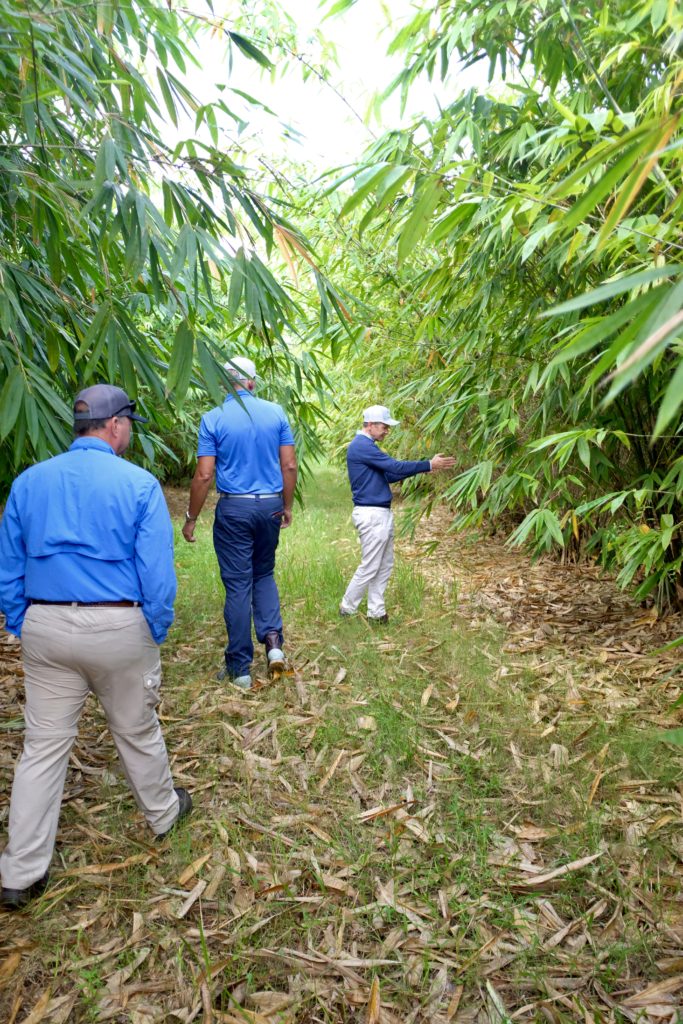By Frank Giles
Bamboo is gaining momentum as a potential alternative crop in Florida. Recent developments, including improved variety selection and new infrastructure, are causing some growers to investigate the crop more closely.
Responding to the interest, the Florida Bamboo Growers Association, Inc. was founded this spring. The association held its first board of directors’ election in June. Kevin Barley was elected as its director and president. He also works as farm development manager for Greenfield Bamboo Investments, LLC.
Barley says there’s roughly 130 bamboo farms in Florida. The association recently sent out membership application forms to those growers, and he expects reasonable participation from that group. In addition, he anticipates about 30 to 40 allied members will join the association.

Photo courtesy of Greenfield Bamboo Investments, LLC
A UNITED VOICE
Barley says the association was established to bring the growing community together to ensure a unified voice and to take advantage of the potential the crop offers.
“For us to make good decisions, we need perspectives about farming practices, best management practices, production and markets. The association is a place where we can develop and share information that enables all of us to be good farmers,” Barley says.
While bamboo has been planted for years in Florida, research is limited. The association plans to put an emphasis on research on how to grow the crop in Florida’s unique climate.
“One of our first steps is to make a connection with the University of Florida Institute of Food and Agricultural Sciences (UF/IFAS),” Barley says. “This is where we can get help on questions about freeze protection, varietal differences and plant setting dimensions.”
The association also will seek to better understand and develop markets for bamboo. Food uses from young shoots and wood products are the two main markets. According to Barley, the United States imports 60 million pounds of bamboo shoots (for food) annually from Asia for the Asian American market. The United States imports $500 million annually in bamboo wood products.
“There is opportunity to increase the food market dramatically as the product is introduced to the traditional American health-conscious consumer,” he says. “The market for wood is for wood floors, building products, bioplastics, textiles and biochar soil amendments with endless demand.”
PLANTING CONSIDERATIONS
Of the roughly 1,200 commercial acres of bamboo in Florida, about 95% of that is planted with the Dendrocalamus asper variety. This is a clumping variety that is the most important commercial variety planted in Thailand, which is a leading production region in the world.
The crop has caught citrus growers’ attention as HLB disease continues to ravage Florida groves. Some growers are considering it as a fill-in crop until more permanent solutions to HLB are developed.
“With citrus in decline, it is good to know that bamboo grows best on citrus land, uses similar irrigation and nutrition practices but has no material pests and diseases,” Barley says. “Caretaking costs are about $1,200 per acre per year. Production begins in the third year after planting. Farmers can expect profits to begin in year three, and generally increase as the plants mature until about the sixth or eighth year. The plants are known to last 80 years.”
INVASIVE POTENTIAL
With the increased interest in bamboo, UF/IFAS has been warning growers to consider the potential the plant has to become invasive in the landscape. A UF/IFAS bulletin noted: “There are two major types of bamboo: clump forming and running. Generally, running bamboos thrive in temperate climates and are a high risk for invasion; the less risky — but not risk-free — clumping bamboos prefer tropical or subtropical conditions. Still, both require management to keep them contained.”
Barley says the association doesn’t recommend planting the running bamboo varieties because of their invasive potential. But, he added, clumping varieties can be managed.
“In fact, when planted, clumping-type bamboo looks like an orange grove, with a planned setting and everything precisely in its place,” he says.









